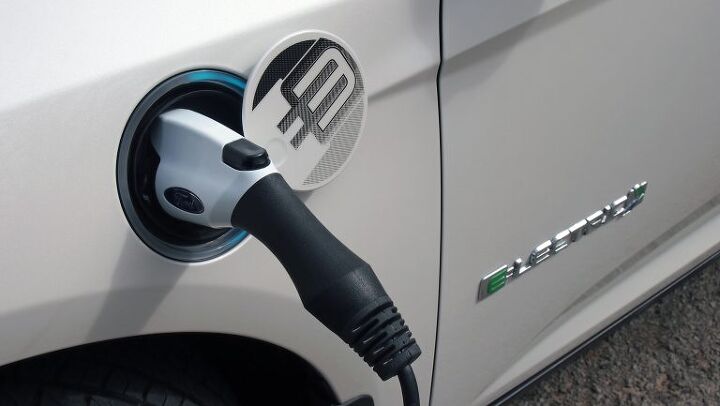Oh, the Places You Won't Go on the Obama Administration's 48 EV Corridors

Battery electric vehicles are supposedly the future, but you’ll need an EV with plenty of range if you want to visit some of the areas overlooked by the Obama administration’s new charging corridor plan.
Earlier today, the White House announced 48 electric vehicle charging corridors spanning 25,000 miles of highway in 35 states and the District of Columbia. The electrified routes, established a month before the government was required to do so under federal law, will place a recharging station within reach of even the wimpiest electric vehicles. That means 50 mile intervals at a minimum.
For some areas, nervous EV road trippers would be best served by a gas guzzler or low-cost airline.
The announcement follows this summer’s $4.5 billion loan guarantee program designed to spur construction of charging stations. General Electric, BMW, Nissan and General Motors have agreed to help built the network, with the cooperation of numerous utilities, local municipalities and 28 states.
“These initial and future corridors will serve as a basis for a national network of electric vehicle charging infrastructure to enable coast to coast zero emission mobility on our nation’s highways,” the administration stated.
Expect plenty of signage added to those 48 corridors, each of which was included in a slightly longer list of “alternative fuel corridors.” If you’re looking for juice, signs developed by the Federal Highway Administration will tell you where to find it. Chances are drivers will also discover delicious fast food and (hopefully) above par washroom facilities near the electron pump.
Now, where can’t you go on these highways of the future? Plenty of places. The corridors bypass much of the Upper Plains, desert Southwest, Gulf coast and Ohio Valley. Sorry, Biloxi and Bismark. Naturally, both the west and east coasts — as well as Texas and the Midwest — see their EV dreams come true.
Besides the highway network, 24 state and local jurisdictions have signed on to boost their EV fleet and install local charging stations, plus a host of other initiatives. Will it boost EV ownership? The feds sure hope so, as consumers have a nasty habit of failing to meet government expectations.
Obama’s one million EV marker came and went in 2015 with less than half that number sold. According to Reuters, only 520,000 electrics vehicles have sold in the U.S. since his 2008 announcement.
[Image: © 2016 Jeff Voth/The Truth About Cars; Federal Highway Administration]

More by Steph Willems
Latest Car Reviews
Read moreLatest Product Reviews
Read moreRecent Comments
- Carson D It will work out exactly the way it did the last time that the UAW organized VW's US manufacturing operations.
- Carson D A friend of mine bought a Cayenne GTS last week. I was amazed how small the back seat is. Did I expect it to offer limousine comfort like a Honda CR-V? I guess not. That it is far more confining and uncomfortable than any 4-door Civic made in the past 18 years was surprising. It reminded me of another friend's Mercedes-Benz CLS550 from a dozen years ago. It seems like a big car, but really it was a 2+2 with the utilitarian appearance of a 4-door sedan. The Cayenne is just an even more utilitarian looking 2+2. I suppose the back seat is bigger than the one in the Porsche my mother drove 30 years ago. The Cayenne's luggage bay is huge, but Porsche's GTs rarely had problems there either.
- Stanley Steamer Oh well, I liked the Legacy. It didn't help that they ruined it's unique style after 2020. It was a classy looking sedan up to that point.
- Jalop1991 https://notthebee.com/article/these-people-wore-stop-signs-to-prank-self-driving-cars-and-this-is-a-trend-i-could-totally-get-behindFull self stopping.
- Lou_BC Summit Racing was wise to pull the parts. It damages their reputation. I've used Summit Racing for Jeep parts that I could not find elsewhere.



































Comments
Join the conversation
http://www.thetruthaboutcars.com/2013/02/plus-ca-charge-electric-touring/ 1914 guide to charging stations on the Lincoln Highway: http://i2.wp.com/www.sociabilityrun.org/wp-content/uploads/2013/05/EVLH-475.jpg
Let's spend all our infrastructure funding on EV charging systems rather than repairing our decaying bridges and repaving our third world roads. What could possibly go wrong?